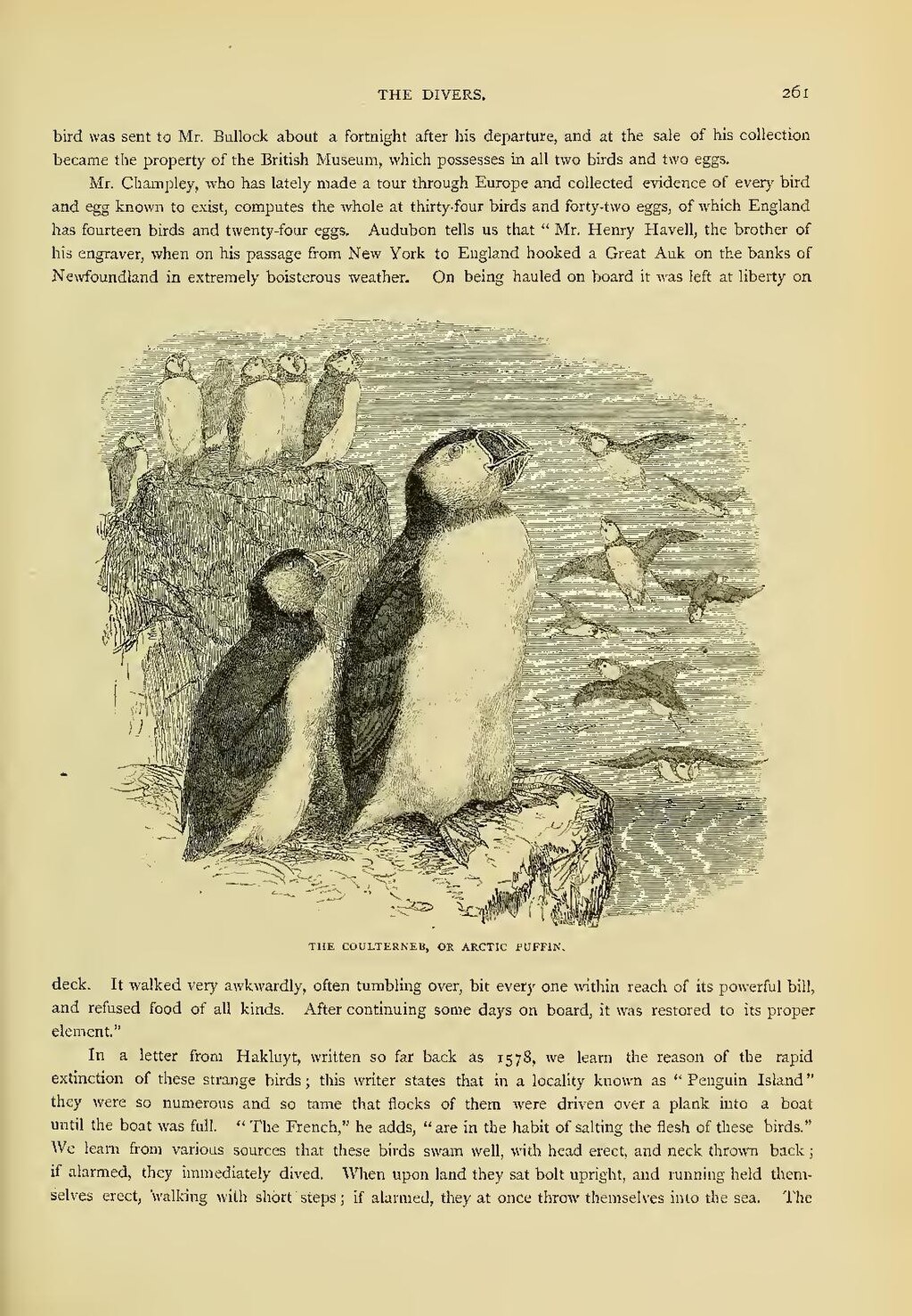bird was sent to Mr. Bullock about a fortnight after his departure, and at the sale of his collection became the property of the British Museum, which possesses in all two birds and two eggs.
An image should appear at this position in the text. To use the entire page scan as a placeholder, edit this page and replace "{{missing image}}" with "{{raw image|Cassell's book of birds (IA cassellsbookofbi04breh).pdf/291}}". Otherwise, if you are able to provide the image then please do so. For guidance, see Wikisource:Image guidelines and Help:Adding images. |
THE COULTERNEB, OR ARCTIC PUFFIN.
Mr. Champley, who has lately made a tour through Europe and collected evidence of every bird and egg known to exist, computes the whole at thirty-four birds and forty-two eggs, of which England has fourteen birds and twenty-four eggs. Audubon tells us that "Mr. Henry Havell, the brother of his engraver, when on his passage from New York to England hooked a Great Auk on the banks of Newfoundland in extremely boisterous weather. On being hauled on board it was left at liberty on deck. It walked very awkwardly, often tumbling over, bit every one within reach of its powerful bill, and refused food of all kinds. After continuing some days on board, it was restored to its proper element."
In a letter from Hakluyt, written so far back as 1578, we learn the reason of the rapid extinction of these strange birds; this writer states that in a locality known as "Penguin Island" they were so numerous and so tame that flocks of them were driven over a plank into a boat until the boat was full. "The French," he adds, "are in the habit of salting the flesh of these birds." We learn from various sources that these birds swam well, with head erect, and neck thrown back; if alarmed, they immediately dived. When upon land they sat bolt upright, and running held themselves erect, walking with short steps; if alarmed, they at once throw themselves into the sea. The
